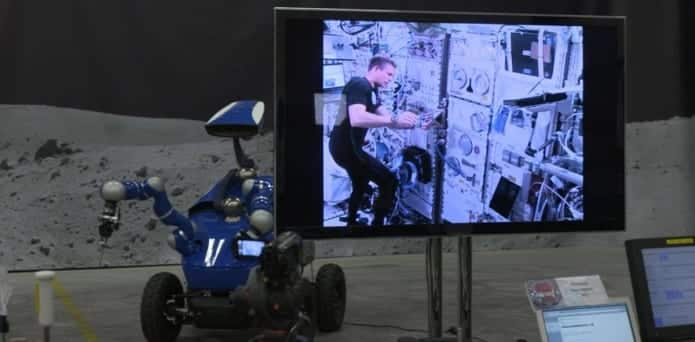Humanoid robots to help astronauts onboard ISS
French researchers have developed ‘autobiographical memory’ for the Nao robot and this system will help the ISS crew to pass the key information to the next batch.
An astronaut usually spends around six months aboard the ISS (International Space Station) per expedition, though in some exceptional cases the crew members might spend around a year but then eventually they are replaced by new crew members.
On the other hand, a robot does not require to eat or breathe and thus can afford to live easily on the spacecraft and hence it is the only permanent member of ISS.
Researchers from the French National Centre for Scientific Research (CNRS) have developed a special system known as “autobiographical memory” for the ‘Nao humanoid robot’ which can be used by the ISS crew members to pass on the key information and assist the next batch of astronauts aboard ISS with maintenance and repair procedures.
Autobiographical memory:
Under the present conditions wherein humanoid Robonaut 2 is permanently flying aboard the ISS, it is becoming much more essential for a robot to understand the concept of cooperative behavior so that it can help in the transmission of knowledge to humans.
Hence, researchers at the Inserm/Universite Claude Bernard Lyon developed this unique system of ‘autobiographical memory’ to set up easier cooperation between humans and robots which is need of the hour in the field of space operations.
In order to use a robot as the medium of knowledge transmission, researchers explain that a human agent needs to teach new actions to the ‘Nao humanoid robot’ either through physical demonstrations or via voice command.
The ‘autobiographical memory’ is just awesome as it not only records the video of the repair but the original user can even teach the Nao robot to assist other crew members through voice commands. Furthermore, the human agent can even manually position the limbs of this Nao by using Kinetic.
Basically, an astronaut needs to combine the individual repair actions which they are performing on the space equipment and then store it into the newly developed autobiographical memory of the robot. The robot is then even programmed to reproduce these actions for other astronauts as and when required.
For example, a similar type of failure would trigger the robot’s memory which will eventually enable the robot to use its video system and show the repair made by the earlier astronaut to the new crew member.
The robot is also trained to respond to questions regarding the repair. Suppose, a slightly different failure occurs then the robot could use its expertise on such types of failures and guide the new crew member to resolve the issue.
In all, we can say this system is quite feasible and it shows that a trained robot has great potential to accumulate and transfer the knowledge.
The attached video will clearly show how the unique system can be used by users to record and even access the instructions through Nao.
Peter Ford Dominey, a senior researcher says: “The transmission of information on board is essential, since crews change every six months. In this scenario, an electronic card is damaged.”
French researchers eventually are planning to test their unique “autobiographical memory” technology loaded in the ‘Nao humanoid robot’ on a spacecraft in the real conditions of space operations.
Once they get permission from the space agencies, researchers can very well port this technology into any robot that is aboard the ISS.
Another area where this system finds its application is in assisting the elderly people by playing the role of a personal memory aid for their day to day tasks.

